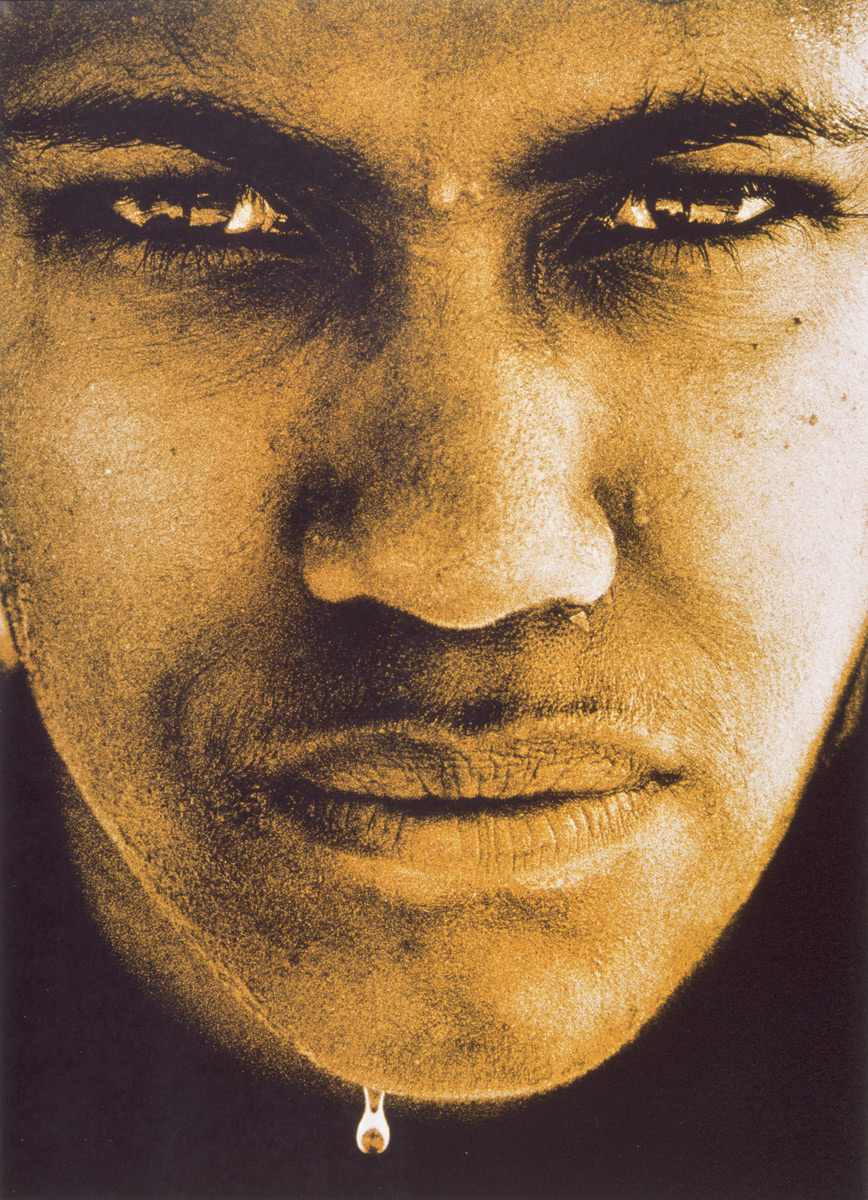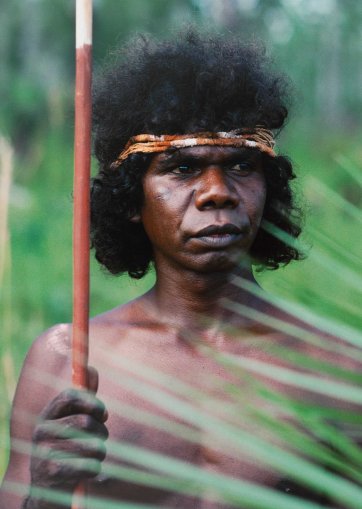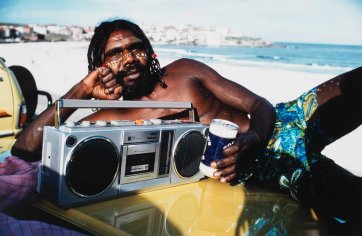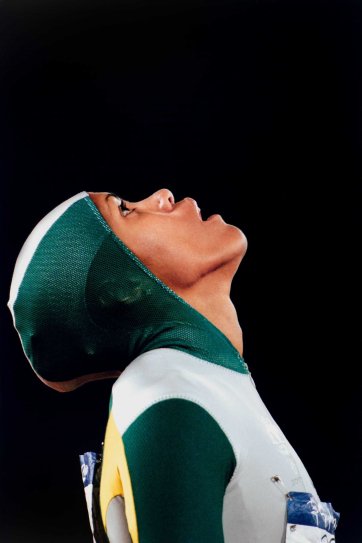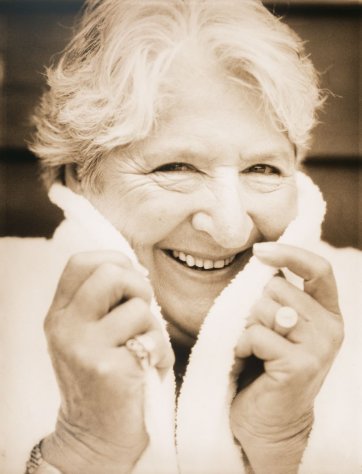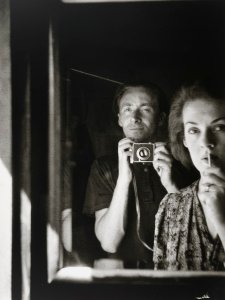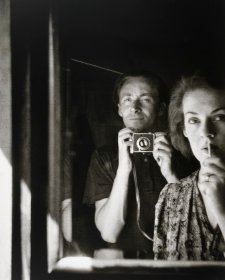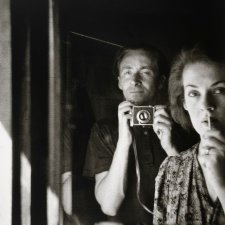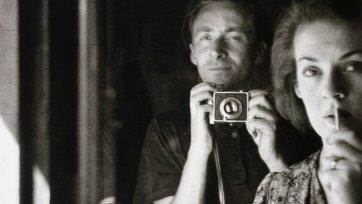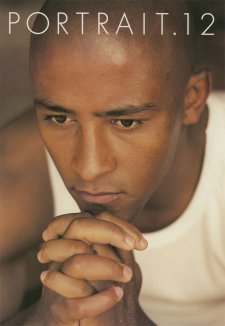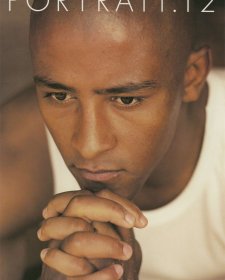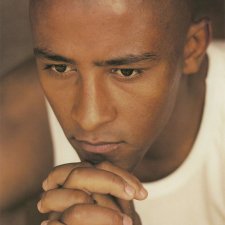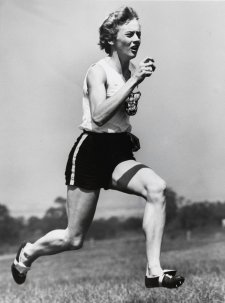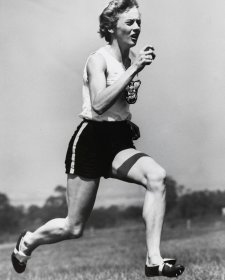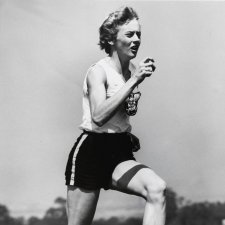Over the last five years the National Portrait Gallery has developed a collection of portrait photographs that reflects both the strength and diversity of Australian achievement as well as the talents of our photographers.
As a medium which captures a direct impression of a person, portrait photography is a subject that fascinates us all. Part of this interest lies in the number of levels in which a portrait may be read.
For not only does it capture an image of an individual, perhaps revealing an intimate detail of a personality or documenting an important event in a life, but it also tells much about the aims and the ideals of the photographer. The multi-faceted relationship between photographer and subject further influences the way in which the viewer perceives the image, providing an additional element in its interpretation. A diverse range of portrait photographs are featured in Depth of Field, demonstrating the endless possibilities of the medium and the complex roles in which portrait photographs exist.
One of the more fascinating aspects of the exhibition is the section that displays multiple portraits of a sitter taken by different photographers. A comparison of these photographs demonstrates that portraits are never definitive images, but instead only capture elements of the sitter's character in a fixed moment in time.
The photographic duo, Montalbetti + Campbell, illustrate this most clearly when they state, 'It is irrelevant how many times a person has been photographed. Our aim is to create unique images of them, to be part of their testimony'. In their portrait of Cathy Freeman, the Olympic sprinter is depicted as a determined, intense individual. The limited tonal range and detailed close up of her face, contributing to this effect. The athlete's resolute vision, which connects directly with the viewer, also adds weight to this conviction. Shot in 1994, at the time Freeman's career was beginning to take off, the image draws the viewer into the work and boldly states that there is more to come.
Fast forward to the 2000 Sydney Olympics and Freeman's historic win in the 400-metre sprint. Cloaked in her green and gold cat suit, her eyes looking through the stadium roof to the night sky
above, Freeman is captured in an iconic shot, seconds after her win. Press photographer, David Caird presenting the viewer with an intimate glimpse of the athlete, in the moment when Freeman's determination and hours of training were suddenly rewarded. The stark, black background and simple compositional focus on the subject contribute to this effect and make it an image that will live forever in the memory of all Australians.
One can also observe the distinction of photographic styles and approaches by comparing the portraits of David Gulpilil by David Moore and Tracey Moffatt. Gulpilil is one of Australia's most successful Aboriginal actors, who first achieved recognition as an unknown 15 year old in the internationally acclaimed film, Walkabout. He was also the subject of Craig Ruddy's award winning portrait in the 2004 Archibald Prize.
In Moore's portrait, Gulpilil is presented as himself, as a figure at ease in his country in Arnhem Land. Symbolising the actor's respect for the landscape, culture and people of his home. Moore's interest in form and composition are also apparent, as the strong vertical and horizontal lines created by Gulpilil's decorated spear and hairpiece, combined with the diagonal pattern of leaves, frame the actor in the landscape.
Conversely Moffatt's portrait is highly contrived, with Gulpilil acting out a role in the image itself. This is characteristic of Moffatt's style and deliberately constructed images and as the artist herself has observed, 'I am not concerned with capturing reality, I'm concerned with creating it myself.' Clothed in brightly coloured board shorts and holding a beer can in one hand, Gulpilil is portrayed in the guise of the stereotypical Australian surfer, traditional patterns painted on his face in the place of sunscreen. In doing so Moffatt forces the viewer to confront their notion of Aboriginal identity and as Gael Newton noted in 1995 in an essay on the artist, 'His [Gulpilil's] relaxed pose ironically overturns our history in which sun bronzed Aussie surfers have displaced the original inhabitants from our shores.' Thus on one level it may be seen as a portrait of Gulpilil, however as an image constructed outside reality, it may also be viewed as a work that simply reflects the photographer's own ideals.
The ability of photography to produce unique portraits of an individual can also be noted through a comparison of the Gallery's two photographs of Dawn Fraser. In David Moore's image the Olympic champion is depicted in the pool, in a break between training in 1963, when the swimmer was preparing for her third Olympics in Tokyo. Fraser's focused expression and position in the water combine to produce the iconic shot. Peter Brew-Bevan's 1998 portrait, photographed 35 years later, presents the viewer with a more mature Fraser. The towel wrapped around Fraser's neck providing a clue to her past achievements, whilst her elated expression suggests that she has found happiness in her life after competitive swimming. Although the photographs present two distinct images, they are both equally compelling portraits, demonstrating the historical significance of photography over time.
The exhibition also features an interesting selection of portraits depicting artists in their studio. In Lewis Morley's image of Margaret Olley the artist is photographed amidst the creative chaos of her house and studio in Paddington - the source of inspiration for the interior and still life paintings for which she is renowned. Still life arrangements, paint, brushes, and papers compete for space and attention on the tables, chairs, and floor that surround the artist, providing an intimate insight into Olley's working environment.
Sage captures Nora Heysen in a moment of quiet contemplation, in his portrait of the artist. Amongst the piles of books, easels and paintings, it is Heysen's 1933 work, A portrait study - Ruth, which stands out, providing the viewer with an example of Heysen's style and hinting at the history hidden in the Hunters Hill house and studio, where the artist worked for the majority of her career. In Morley's portrait of Brett Whiteley the artist gazes strangely out at the viewer, creating an element of uncertainty in the work. The inclusion of the hands of a third person, who holds up the unusual arrangement of gumboot and stuffed bird adding an element of ambiguity to the portrait composition.
Depth of Field is an exhibition about the development of the National Portrait Gallery's photographic collection. Featuring more than eighty portraits by both historical and contemporary photographers, it celebrates the collection vision of the gallery so far, and suggests that we can certainly look forward to what the next five years will bring.
